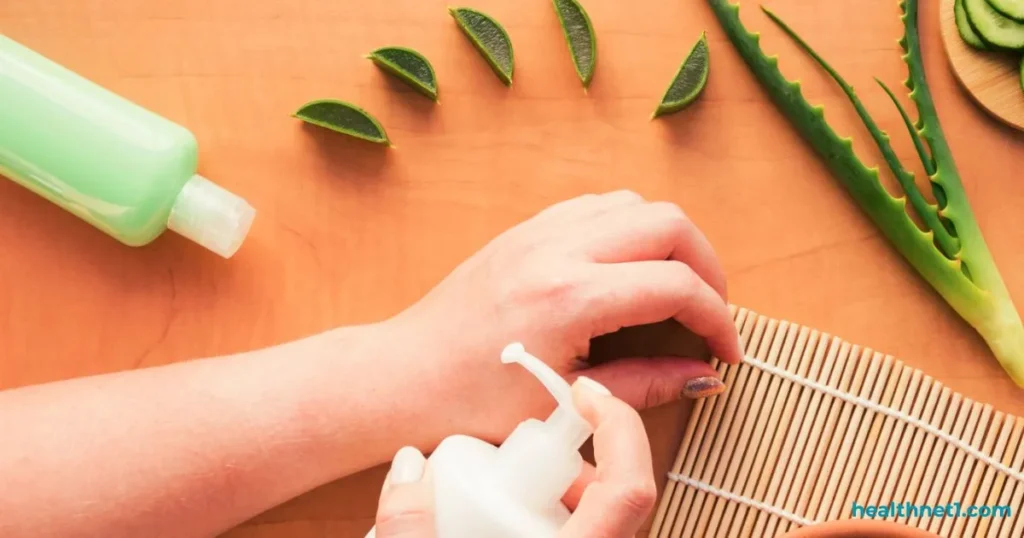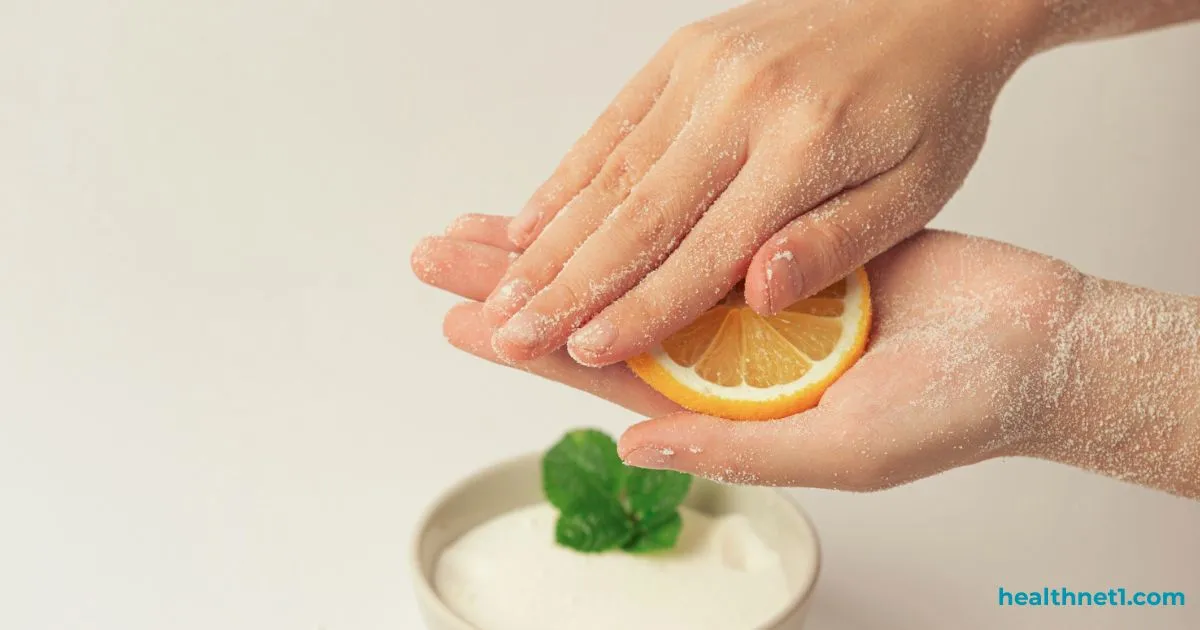When Nature Holds the Cure
If you’ve ever battled a stubborn fungal infection—be it athlete’s foot, toenail fungus, or yeast imbalance—you know how frustrating it can be. That itch that won’t quit, the burning, the redness—it feels like your skin has turned against you. You try one over-the-counter cream after another, but the relief never seems to last.
Table of Contents
Here’s some good news: nature offers powerful antifungal remedies that have stood the test of time and are now backed by scientific research. Many of these natural antifungal agents can help your body fight fungal growth safely, gently, and effectively.
This guide will walk you through five of the most effective natural antifungal remedies—how they work, how to use them, and what science says about each. By the end, you’ll have a simple, evidence-based plan to help your body restore balance and comfort naturally.
Understanding Fungal Infections and Why Natural Remedies Matter
What Exactly Is a Fungal Infection?
Fungal infections are caused by overgrowth of fungi such as Candida, Aspergillus, or Trichophyton. These microorganisms thrive in warm, moist areas—think between your toes, under skin folds, or in the gut when your immune system is weakened.
Common fungal infections include:
- Athlete’s foot
- Ringworm
- Toenail fungus
- Yeast infections
- Oral thrush
While most fungal infections aren’t dangerous, they can be persistent and uncomfortable.
Why Natural Remedies Can Be a Smart Choice
Natural antifungal remedies have been used for centuries in herbal medicine. Many contain bioactive compounds that inhibit fungal growth without harsh chemicals. Compared to prescription antifungals, they can:
- Support immune balance
- Reduce recurrence
- Cause fewer side effects
Still, natural doesn’t mean risk-free. Always check for allergies and talk with your healthcare provider before starting any new treatment—especially if you have chronic conditions or take medications.
Related reading: Can Being Sick Cause High Blood Pressure? – learn how illness can impact your overall immune balance.
Top 5 Natural Antifungal Remedies That Really Work
Below are five scientifically supported remedies that can help you tackle fungal infections naturally and safely.
1. Tea Tree Oil — Nature’s Skin Defender
Tea tree oil, extracted from the leaves of Melaleuca alternifolia, is one of the most potent natural antifungal agents known. It contains terpinen-4-ol, a compound proven to destroy fungal cell membranes.
How it works:
Tea tree oil disrupts the protective layers of fungi, causing them to die off. Studies published in the Journal of Antimicrobial Chemotherapy confirm its effectiveness against Candida and Trichophyton strains—two of the most common fungal invaders.
How to use:
- Mix 5 drops of tea tree oil with 1 tablespoon of coconut oil.
- Apply to the affected area twice daily.
- Always patch-test first to avoid irritation.
Pro Tip: Add a few drops to your foot bath to help prevent athlete’s foot and nail fungus.
2. Garlic — The Ancient Antifungal Powerhouse
Garlic is more than a kitchen staple; it’s a natural antibiotic and antifungal powerhouse. Its key compound, allicin, exhibits strong antifungal activity and has been extensively studied for its ability to inhibit fungal cell growth.
How it helps:
Allicin interferes with enzymes that fungi need to survive, making it a safe and effective home remedy for mild fungal infections.
Ways to use garlic:
- Internal: Eat 1–2 raw cloves daily or take standardized garlic capsules.
- Topical: Mix crushed garlic with coconut oil and apply to the affected area for 20–30 minutes before rinsing off.
Caution: Garlic can be irritating to the skin. Avoid applying it directly without a carrier oil.
Balance your diet and immune health by understanding Blood and Sugar Levels
3. Coconut Oil — The Gentle Protector
If you’re looking for a mild yet effective remedy, coconut oil is your go-to. It’s rich in caprylic acid and lauric acid, two fatty acids with natural antifungal properties.
What makes it effective:
These compounds penetrate the fungal cell membrane, weakening it and eventually killing the fungus. A 2015 study in the Journal of Medicinal Food found that coconut oil was effective against Candida albicans—the same yeast responsible for thrush and vaginal yeast infections.
How to use:
- Apply a thin layer of organic, cold-pressed coconut oil to affected skin twice daily.
- For internal support, add 1 tablespoon daily to your diet (e.g., in smoothies or cooking).
Bonus tip: Coconut oil also soothes itching, reduces redness, and supports skin healing.
Related article: Does High Cholesterol Make You Tired? — discover how natural fats can influence your energy and overall health.
4. Apple Cider Vinegar — Balancing Your Body’s pH
Apple cider vinegar (ACV) is another simple yet powerful antifungal that works by restoring your body’s natural pH balance. Fungi thrive in alkaline environments, and ACV’s mild acidity helps prevent their growth.
Scientific insight:
According to research published on PubMed, the acetic acid in vinegar can disrupt fungal membranes, effectively killing yeast and molds.
How to use ACV:
- Topical soak: Mix 1 part apple cider vinegar with 3 parts warm water and soak the affected area for 15–20 minutes.
- Internal use: Add 1 teaspoon of ACV to a glass of water before meals to help balance gut flora.
Safety reminder: Avoid applying undiluted vinegar to open wounds or sensitive areas—it can sting.
5. Oregano Oil — The Strongest Natural Antifungal Extract
Oregano oil is a natural antimicrobial powerhouse. It contains carvacrol and thymol, two compounds shown to break down fungal cell walls and stop fungal replication.
Research-backed:
Studies in Frontiers in Microbiology (2021) found oregano oil effective against various fungal species, including drug-resistant Candida.
How to use:
- Topical: Mix 2 drops oregano oil with 1 tablespoon olive oil; apply twice daily.
- Internal: Take oregano oil capsules (standardized) as directed on the label.
Note: This oil is very potent—always dilute it properly.
Using Natural Antifungal Remedies Safely

Even natural remedies can cause irritation or interact with medications. Here’s how to stay safe:
Do’s
- Always dilute essential oils before applying to skin.
- Perform a patch test first.
- Support your immune system with a balanced diet rich in vegetables and probiotics.
- Keep affected areas clean and dry.
Don’ts
- Don’t use multiple strong oils (like tea tree and oregano) together.
- Don’t apply raw garlic directly to skin.
- Don’t rely solely on natural treatments for severe infections—consult your doctor.
Tip: If symptoms persist beyond two weeks, it’s best to seek medical advice from a licensed professional.
Preventing Fungal Infections Naturally
You can lower your risk of recurring infections by adopting a few daily habits:
- Wear breathable shoes and cotton socks to prevent moisture buildup.
- Avoid sharing towels or personal items.
- Change out of sweaty clothes quickly.
- Maintain healthy blood sugar levels to avoid feeding yeast.
Frequently Asked Questions (FAQ)
What is the best natural antifungal remedy for yeast infections?
Garlic and oregano oil are among the most effective. Both have been proven to inhibit Candida growth, especially when used consistently and safely.
Can natural antifungal oils replace prescription medicines?
Not entirely. While they can complement your treatment, serious or systemic infections require medical attention. Always check with your doctor.
How long does it take for a natural antifungal to work?
You might start seeing results in 1–3 weeks, depending on the infection type and consistency of use.
Are natural antifungal remedies safe for everyone?
Most are safe when diluted properly, but if you’re pregnant, breastfeeding, or have sensitive skin, talk to your healthcare provider first.
Can diet affect fungal infections?
Absolutely. Fungi feed on sugar and refined carbs, so limiting those can help. For more guidance, see How Long Does Sugar Stay in Your System?
Conclusion — Let Nature Help You Heal
Nature truly provides some of the best answers for maintaining balance in your body. Whether you’re dealing with a mild skin infection or recurring yeast issues, these five natural antifungal remedies—tea tree oil, garlic, coconut oil, apple cider vinegar, and oregano oil—can help you restore harmony gently and effectively.
By combining them with smart hygiene, a balanced diet, and consistent self-care, you can give your body the support it needs to fight fungal infections naturally.
If you’re unsure where to start, begin with one or two remedies and observe how your body responds. Remember: the goal isn’t just to treat symptoms but to promote long-term wellness from within.
Explore more evidence-based wellness tips at HealthNet1.com and take charge of your health—naturally.

